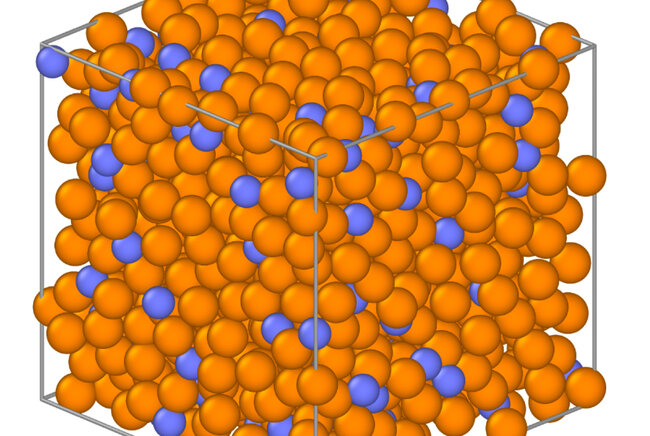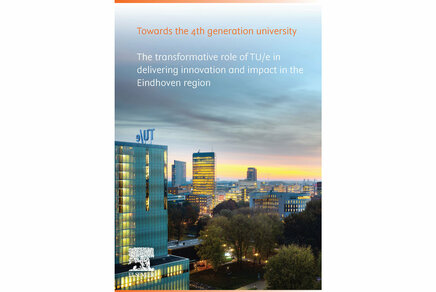New theory to describe dynamics of glass-forming liquids
Chengjie Luo defended his PhD thesis cum laude at the department of Applied Physics on January 17th.

Almost any material can be supercooled or compressed from a liquid to a glass state. During this process, the relaxation dynamics slow down dramatically, while the disordered microstructure undergoes only small changes. This apparent disconnect between structure and dynamics underlies much of the complexity of the glass transition. For his PhD research, Chengije Luo developed a new theory to describe the complex dynamics of glass-forming liquids from a static structure.
Virtually any material can be cooled from a liquid state to a disordered solid state, otherwise known as the glass state. This liquid-to-glass transition is universal and experienced by different types of matter, from small atoms to big grains, and from non-living colloids to living cells.
An interesting phenomenon that takes place during the cooling process is that the dynamics slows down dramatically, but the microstructure undergoes only small changes. This apparent disconnect between structure and dynamics is one of the most important problems in condensed matter physics.

New theory
For his PhD research, Chengjie Luo, in collaboration with Liesbeth Janssen and Kees Storm in the department of Applied Physics, developed a new theory to describe the complex dynamics that emerge from the microstructure.
“The basic idea of the theory is to systematically include more and more correlated particles so that we can predict increasingly more accurate dynamics,” says Luo. “In principle, the theory is applicable to any glass-forming material that is composed of multiple components and thus is very general and powerful.”
Improvement of predictions
Luo extended and applied his theory to several typical models or representations of matter such as the hard-sphere model which can be used to represent colloids, the sticky hard-sphere model that describes the mixture of large colloids and small polymers, the binary Lennard-Jones mixture that is based on metallic glass, and a model of silica that forms the glass we use in products every day.
“In all cases, our theory can improve the description of the dynamics and obtain results closer to empirical observations than previous theories,” notes Luo. “This constitutes the most accurate prediction of glassy dynamics to date from a microscopic first-principles theory. Therefore, our new theory is a promising and general method to clarify the complex structure-dynamics link for glass-forming materials.”
Title of PhD thesis: A First-Principles Theory of the Complex Dynamics of Glass-Forming Liquids. Supervisors: Liesbeth Janssen and Kees Storm.
Media contact
Latest news

![[Translate to English:] [Translate to English:]](https://assets.w3.tue.nl/w/fileadmin/_processed_/e/6/csm_Hendriks%20Banner%20image%20Photonic%20crystal%20fiber-tip%20sensor%20BvOF_9b4093b84b.jpg)
